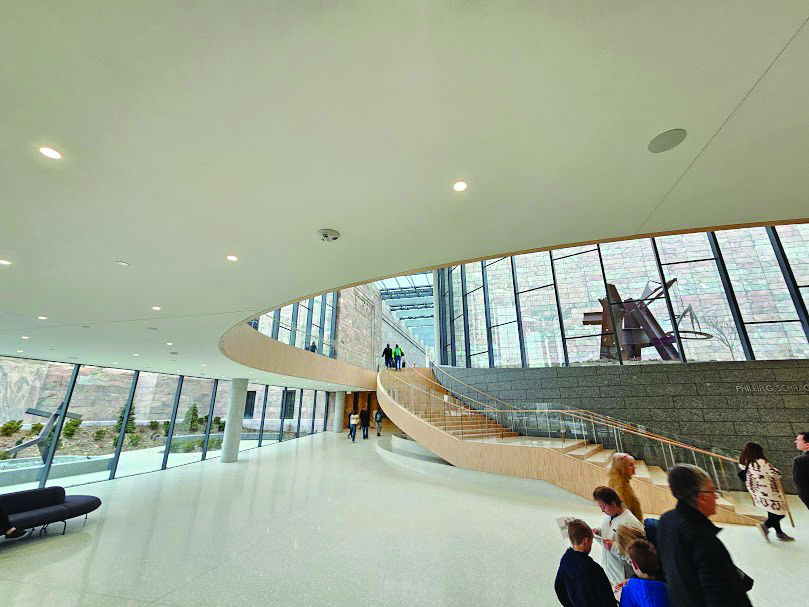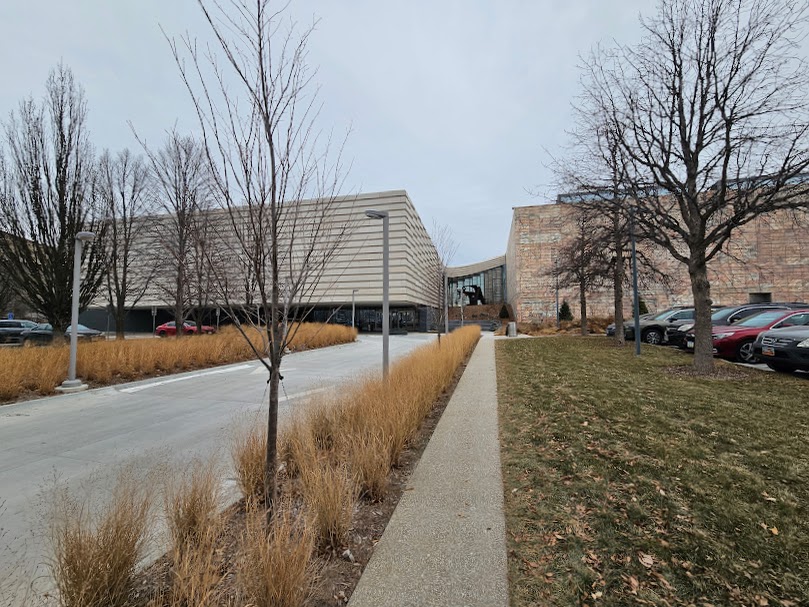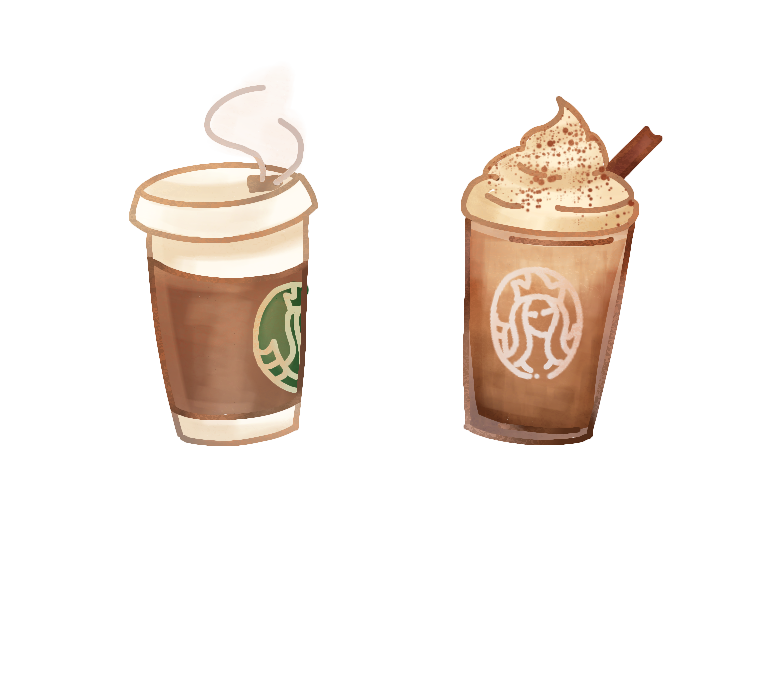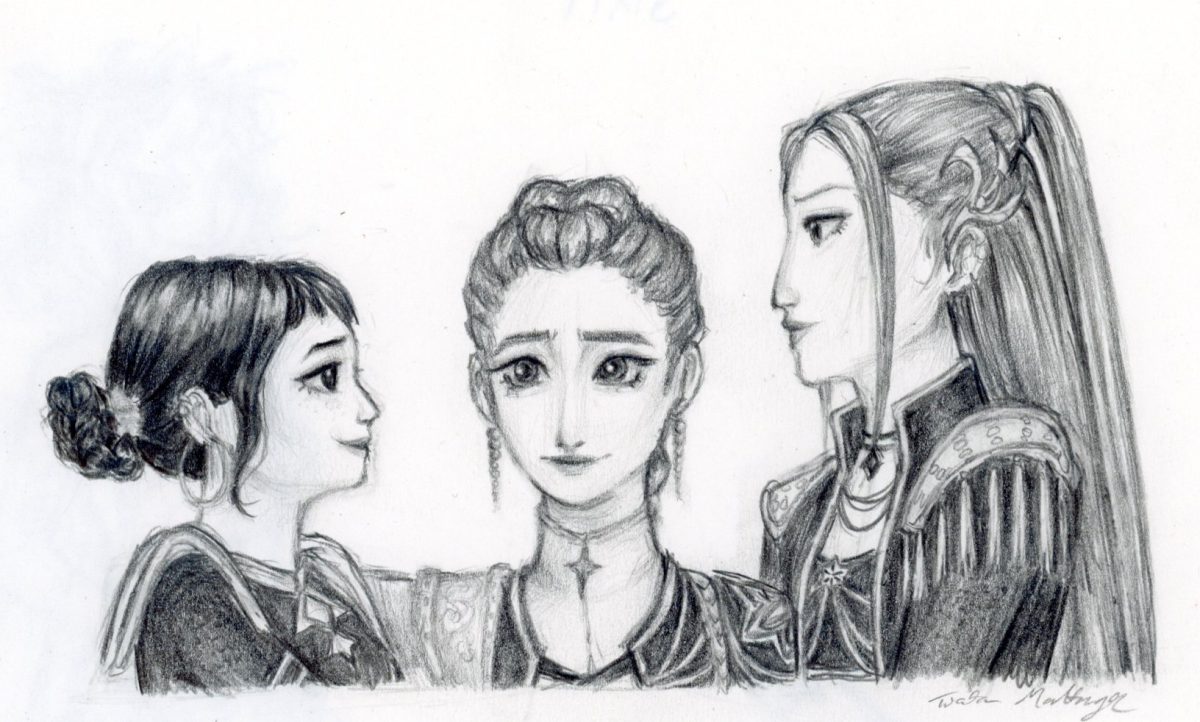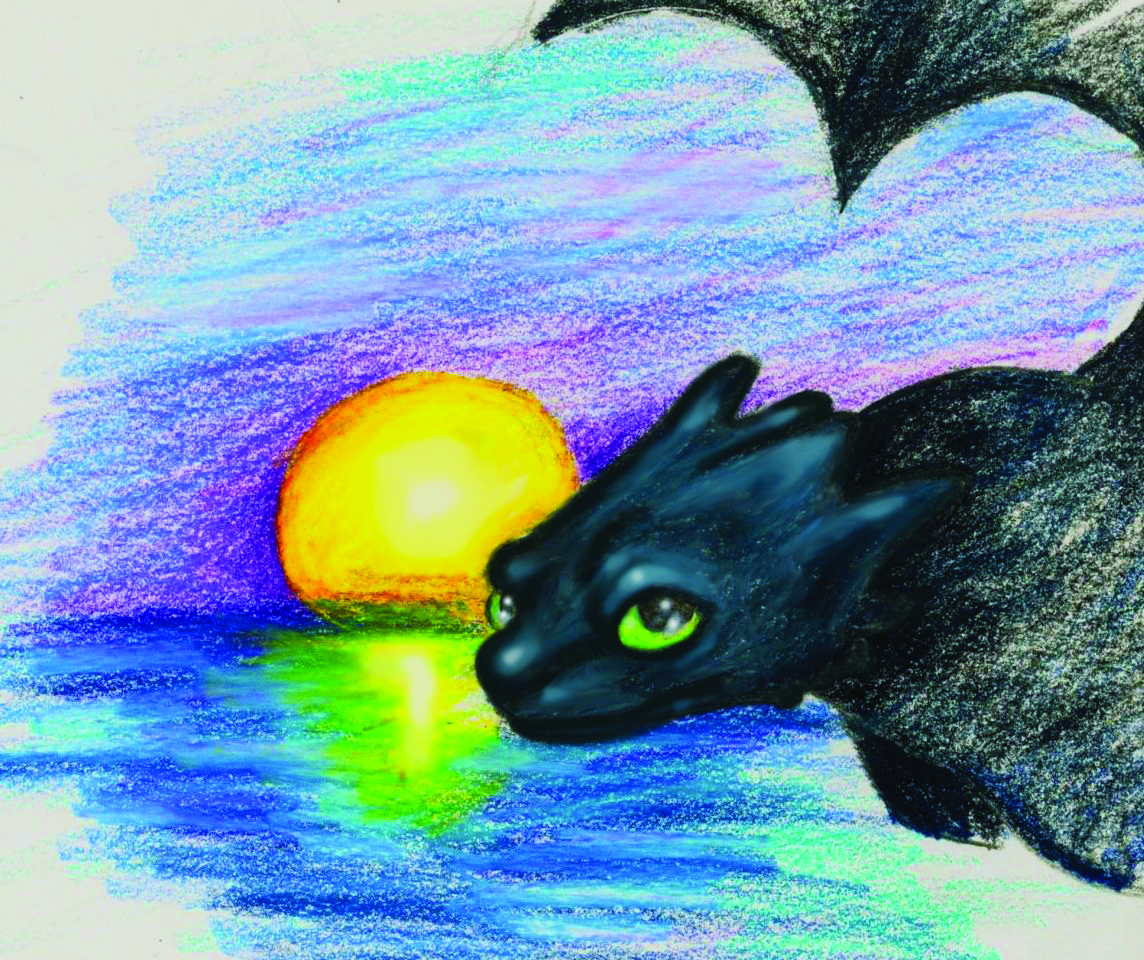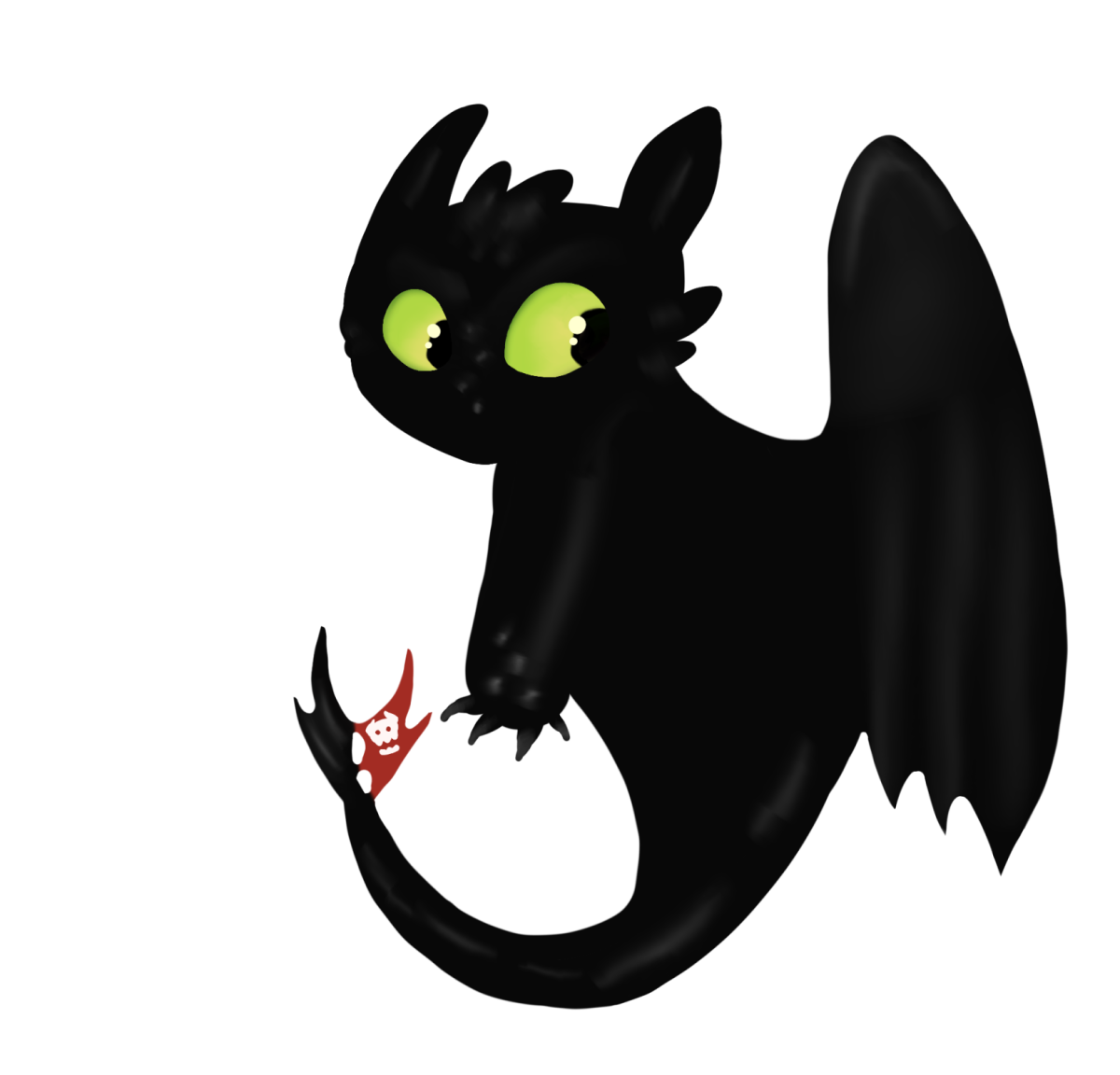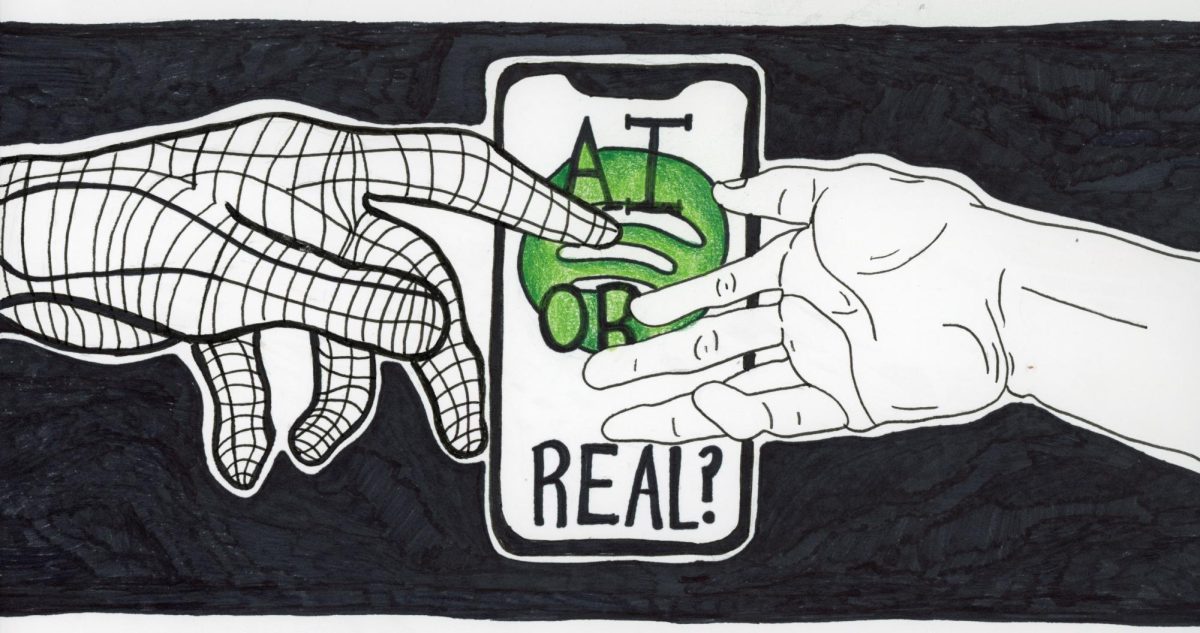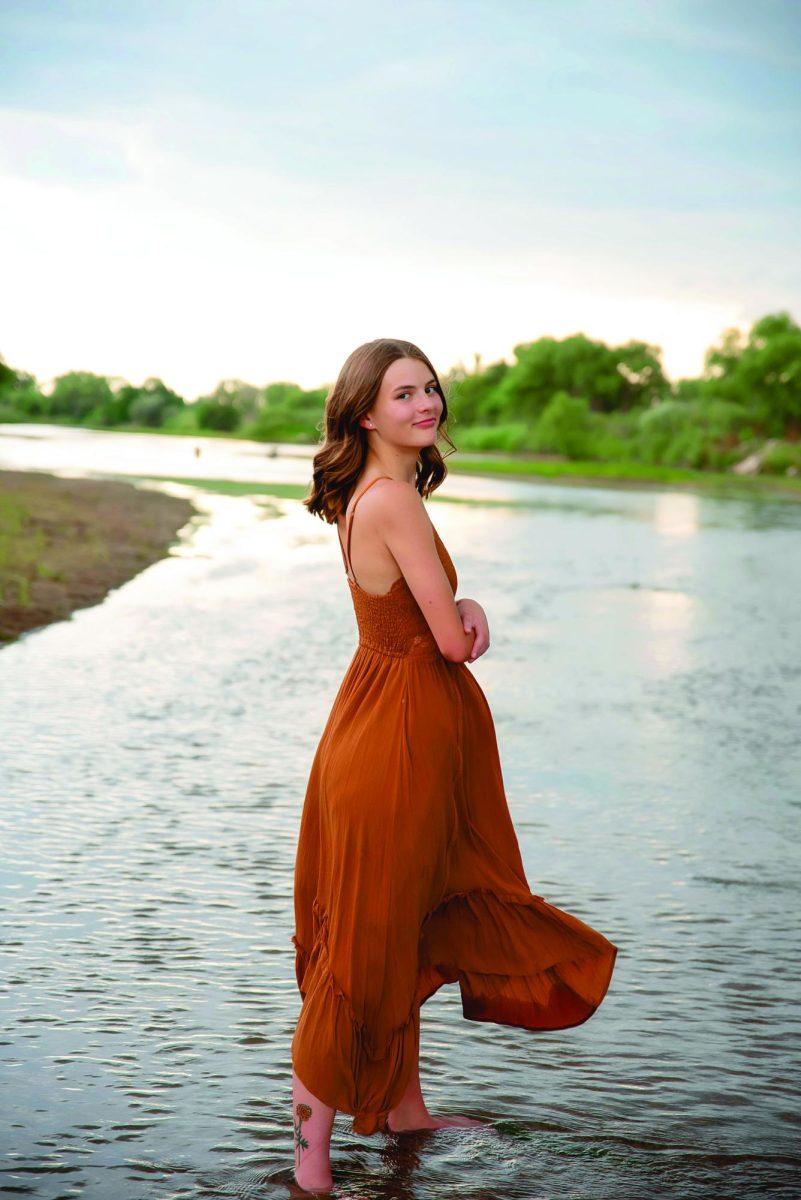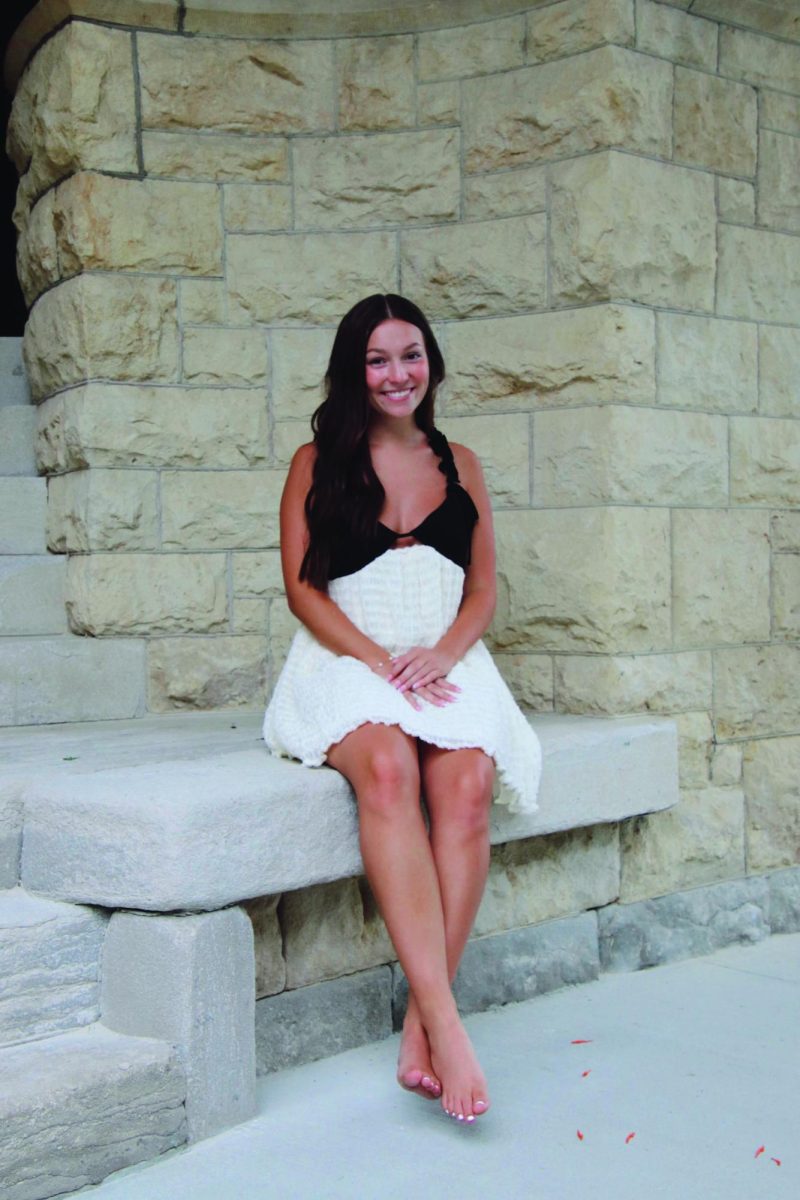The Joslyn Art Museum in downtown Omaha originally opened in 1931 and the museum has had several additions and renovations since then. The museum closed about two years ago for the construction of a large glass expansion. I had never been to The Joslyn prior to its renovations but had wanted to go for a long time. With the new addition to the building finally complete, I got a chance to visit.
I find architecture very interesting, so immediately I was intrigued to see how they would blend the large new addition with the original 1930’s Art Deco structure. From Dodge Street in front of the museum you can view the original Joslyn structure with its grand staircase. Off to the right a large glass tubular structure protrudes from the building. While it is definitely unusual in appearance, I think the architects did a good job of blending the original structure into the modern architecture of the new addition.
You would think that the entrance and parking would be near the giant staircase and doors on the front of the building, but they are not. It’s difficult to get into/find the parking lot, so if you visit make sure to drive around the building to the north side where the parking lot and main entrance are actually located. I found it disappointing that the main entrance shows a very boring part of the building. From that side of the building all you can see is the new glass and concrete addition and not much of the old stone structure. Because my trip took place in the dead of winter, I did not get to experience the landscaping that might have helped to brighten up the entrance. As the old saying goes “don’t judge an art museum by its entrance.” Well… maybe that’s not the saying, but the thought still applies.
Once inside you are met with a gift shop off to the left and a large check in desk. The inside of the new addition is pretty impressive architecturally. The back is lined with massive windows and a wooden staircase winds up to the second floor. One could say the inside of the building is, in itself, a form of art. Once up the stairs you get a pretty incredible view of the old museum building out the large glass windows.
The new addition is mostly filled with modern art and sculptures. As you make your way through you can find countless pieces with sizes ranging from eight and a half by eleven to massive wall filling canvases. Each work has a plaque with a description of the piece. This area contained many works that seemed strange and silly to me, but of course art is subjective. For the most part it was full of abstract works. Those are the kind of things where the meaning has to be found by the viewer and for me, a lot of these pieces just did not click. I did, however, find it very interesting when the plaques displayed the techniques involved in creating the work. Among the pieces I did enjoy were a large mosaic pattern created with glass beads titled “Wopila | Lineage III,” an art piece created using various yarns titled “Mandan Shrine,” a sculpture made from buttons, a piece made with paint and porcelain plates and a painting containing a large rowboat titled “Solo Kalunga.” Some of the most impactful pieces are the ones where elements reveal themselves as you stare at the piece as that is what art is for: to be looked at.
Attached to the new addition is of course the original 1930’s building. This was definitely my favorite part of my visit. The old portion of the museum is more of what I imagine when I think of an art museum. The structure is beautiful. There are large marble pillars, incredible stonework and an ornate fountain in the middle of the building. This area contains more traditional art pieces including paintings of scenes and people as well as pottery. I spent most of my time in the room which contained paintings inspired by the western United States and the “wild west.” These kinds of old style paintings are the kind of works that I could stare at for a long time. I found it very interesting to read the descriptions and think about the mood and feeling that the various painted scenes gave me. I enjoyed pondering the different styles of art and the different painting techniques. All the paintings in this room were tied together with the stone border, green paint and ornate wooden flooring of the room.
Outside of that room is a room with a large water fountain and beautiful tiled floor. To the left is the original entrance to the museum. Up a set of stairs is a “balcony level” that contains pottery and artifacts. There are items from places ranging from ancient Egypt to Rome. The balcony allowed for an even better view of the stonework and the pillars of the museum building and you could look down over the fountain. Unfortunately the museum was nearing closing time at this point and I did not get to explore as much of the original building as I would have liked.
Luckily, as prior mentioned, admission is free and I got a chance to visit again another day. The museum offers free tours at certain times. I was able to do a tour and got a little bit of background on some pieces throughout the museum. In addition, I got a chance to look through a gallery that I had missed on my first visit to the museum as well as learn about some art and recreations by people indigenous to this area.
Overall I really enjoyed my visit to the museum. It’s good sized and has many displays. Since admission is free you can come and go whenever it is open, and I would recommend this as you can really only absorb so much in one day. If you go and modern art is not your thing I would recommend starting with the original portion of the museum and working backwards toward the entrance. I think the tour was worth doing so if you’re interested in that, check their website for tour times.
The museum is open 10-4 most days (closed Monday) and 10-8 on Wednesdays and Thursdays. Admission is free.

